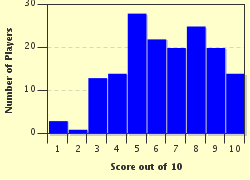Quiz Answer Key and Fun Facts
1. Francis Drake began his sailing career with his second cousin, who had already made a name for himself as a sailor and raider. Who was this cousin?
2. Which English monarch supported the raids of Francis Drake, making him a privateer instead of than a pirate?
3. During Francis Drake's famous three year voyage, he traveled along the coast of what became the western United States. What did he name the land he found there?
4. The Spanish hated "El Draque" so much that at one time a 20,000 ducat reward was offered for Sir Francis, dead or alive.
5. Which of the following statements regarding Francis Drake's ship, "The Golden Hind" is NOT true?
6. What important discovery did Francis Drake and his crew make during their voyage of circumnavigation?
7. Upon completion of his voyage of circumnavigation, Francis Drake was knighted and given a special gift. What is it called?
8. Sir Francis Drake was eventually given a commission in the English navy. What was the highest rank he held?
9. Before the war with Spain, Sir Francis Drake was involved in a famous raid on the Spanish coast during which he was said to have "singed the beard of the King of Spain". Name one of the Atlantic port cities he harassed during this time.
10. With which ingenious action is Sir Francis Drake credited during the war with the Spanish Armada?
Source: Author
ponycargirl
This quiz was reviewed by FunTrivia editor
bloomsby before going online.
Any errors found in FunTrivia content are routinely corrected through our feedback system.


